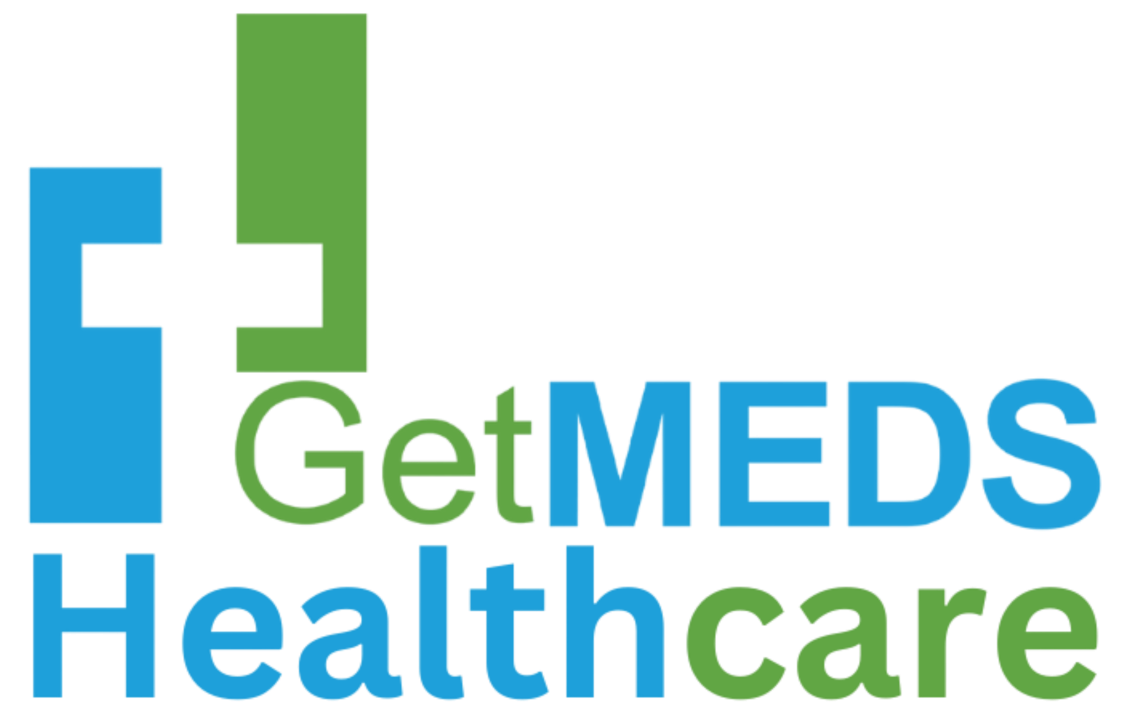More Filipino Women Are Choosing to Use Contraceptives — New CPD Data Reports
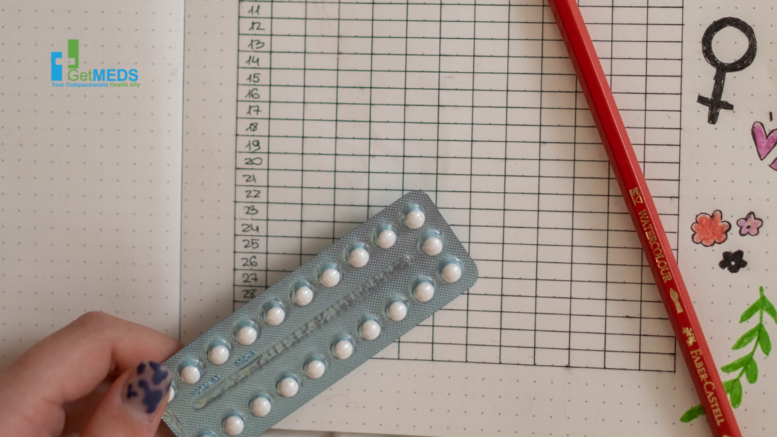
More Filipino Women Are Choosing to Use Contraceptives — New CPD Data Reports March 11, 2025 Article Cancer risk factors in women often stem from a combination of their family’s medical history, environmental exposures, unhealthy lifestyle choices, and genetic mutations. As cancer continues to be a disease that affects FIlipinos not only physically, but emotionally and financially as well (due to cancer therapy cost), the need to enlighten people on how to lessen the chances of developing the said serious illness is more prominent. Especially if we consider the fact that in the Philippines, the incidence rate for cancer in females are significantly higher than males, with breast cancer reported to have the highest incidence and mortality rate for both sex nationwide, establishing its prevalence and the urgency to do the necessary preventive measures against it. [toc] Contraceptive use among Filipino women has shown a notable increase from 8.3 million in 2022 to over 8.6 million recently based on the report of the Commission on Population and Development (CPD). Among the several forms of birth control that is available in the Philippines, oral contraceptives are claimed to be the most prominent that they rely on, with 34.48 percent of the 8.6 million women choosing it as their prime choice when it comes to preventing pregnancy. Next to that, other contraceptive methods that they often opt for are injections (20.66 percent of Pinays are using this) and implants. The growing number of women being more comfortable with using birth control has contributed to the country’s lower birth rate, causing the fertility rate of the Philippines to be recognized as below replacement level — with a data of 1.9 children in women — which means our population rate cannot maintain its current size over time. Further, this makes it clear that Pinays have become more empowered to decide for themselves and to be open to other opportunities they can pursue in life. As women are not limited to roles that only involve being the primary caretakers of their family and managing the household, it’s good that they’re venturing out and choosing better choices for themselves. CPD executive director, Undersecretary Lisa Grace S. Bersales additionally claims that it’s significant that we as a society continue to provide women the platforms to influence change, especially regarding matters that concern meeting their full potential as an individual and the freedom to have their desired number of children and spacing of their births. All of these efforts align to the Philippine Population and Development Plan of Action or PPD-POA 2023-2028 that showcases eight central tactics that involve the advancement of the women population from various demographics. Not to mention, upon celebrating national women’s month this March, this news brings attention to how associations ought to give women a boost and help them meet their needs regarding economic success and meaningful empowerment by giving them a platform wherein they can address their concerns. Bersales continues to say that they are committed in enhancing societal development prospects for Filipino women, ensuring that they can undertake other population issues and challenges that the said census group has so they can in turn improve the entirety of the Philippines’ socioeconomic potential, as well as the overall standard of living for all countrymen. If you’re interested in using oral contraceptives yourself but are having a hard time deciding which brand is for you, check out our guide in finding the best contraceptive pill in the Philippines for your reference. Read also: Contraceptive Pills May Lower Ovarian Cancer Risk
How to Lower Cancer Risk in Women: 12 Easy Ways to Stay Healthy
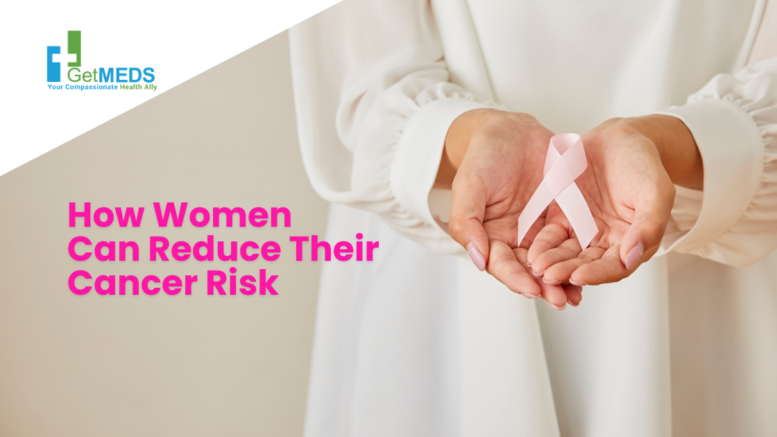
How to Lower Cancer Risk in Women: 12 Easy Ways to Stay Healthy March 28, 2025 Article Cancer risk factors in women often stem from a combination of their family’s medical history, environmental exposures, unhealthy lifestyle choices, and genetic mutations. As cancer continues to be a disease that affects FIlipinos not only physically, but emotionally and financially as well (due to cancer therapy cost), the need to enlighten people on how to lessen the chances of developing the said serious illness is more prominent. Especially if we consider the fact that in the Philippines, the incidence rate for cancer in females are significantly higher than males, with breast cancer reported to have the highest incidence and mortality rate for both sex nationwide, establishing its prevalence and the urgency to do the necessary preventive measures against it. [toc] What are the Most Common Cancer in Women The usual cancer risk age starts after 45 years old, but there’s still a possibility of having the disease when you’re already over 74 years old or when you’re still young (although rare). These are the 5 most common cancers in females: Breast Colon and rectum Cervical Endometrial Ovarian What Increases Cancer Risks in Women As mentioned, the factors that increases the risk of women having cancer are: Family health history: Members of your family (by blood) are known to easily develop cancer. Exposure to environmental risks: Being exposed to air pollution, radiation, chemicals, and the like. Unhealthy lifestyle choices: Drinking alcohol, smoking tobacco, etc. Genetic changes: This is when cells start to become abnormal and go out of control. These variables can contribute to a woman’s susceptibility to cancer, causing them to have a higher chance of developing the said illness if they’re not mindful enough — most especially with risk factors like unhealthy lifestyle choices and being exposed to environmental risks that they can be proactive about when it comes to its prevention. Can Cancer Risk Be Reduced in Women On the question, can cancer be prevented in women, there are certainly measures that can be done in order to reduce the risk of developing any harmful tumor in the body. There are a lot of things that a person can do to prevent cancer from developing in the body or even for its further spread in the case that the disease is already present. You only need to be determined and consistent in ensuring that you take care of yourself by getting rid of bad habits that could make you susceptible to the illness, as well as being well-informed about what other information you ought to know to lessen the risks. 12 Easy Lifestyle Changes to Help Women Prevent Cancer Now that you’re aware that there are ways on how to lower cancer risk, you must be wondering what are the best ways to prevent cancer that you can easily incorporate in your day-to-day life. Here are 12 simple steps that you can use as reference for its prevention: Avoid drinking alcohol Avoid smoking or using tobacco Manage your weight Eat fruits and vegetables Avoid eating ultra-processed foods and meat Exercise regularly Use sunscreen and sun protective clothing Lessen exposure to outdoor and indoor pollution Be cautious of the behaviors that can put you at high risk Get the essential vaccines Be familiar with your family’s medical history Get routinely screened for cancer Let’s dive into them individually. Avoid drinking alcohol All alcoholic drinks, such as red wine, white wine, beer, and liquor are all beverages that you should lessen consumption of or abandon completely to reduce cancer risk. There may be a higher likelihood of having malignancy in the mouth, throat, larynx, esophagus, colorectum, liver, and breast if you do not refrain from consuming alcohol. Instead, you can indulge in other drinks that can be substituted to alcohol like alcohol-free wine, mocktails, sparkling water, tea, and fresh juices. Avoid smoking or using tobacco Without a doubt, the use of tobacco products can do significant harm to your body. Aside from how it’s one of the leading causes of lung cancer, it can cause the oncological disease to develop almost anywhere including the bladder, blood, cervix, colorectum, kidney, liver, mouth, throat, pancreas, stomach, and larynx. Which is why in general, smoking is strongly discouraged by doctors due to the detrimental effects it has on an individual. Not to mention that you may become addicted to nicotine upon using tobacco products for a long time. Even electronic cigarettes are still considered harmful along with inhaling smoke coming from smokers surrounding you (also known as secondhand smoking). Manage your weight It’s been indicated that being overweight or being obese can increase a person’s chances of developing cancer. This is because of how it can lead to long-term inflammation and higher levels of sex hormones, insulin, and insulin-like growth factors. To determine if someone is overweight, their body mass index (BMI) will be calculated. You can do this by dividing your weight in kilograms and your height in meters squared. If your BMI is from 25.0 to 29.9, you are considered overweight; if it’s 30.0 or higher, you are considered obese. The types of malignancy that are linked to obesity are: meningioma, adenocarcinoma, multiple myeloma, kidney, uterus, ovaries, thyroid, breast, liver, gallbladder, upper stomach, pancreas, and colorectum. Read also: 8 Tips to Maintain a Healthy Weight of Your Body Eat fruits and vegetables Fruits and vegetables are among the foods that lower cancer risk. The plants that contain phytonutrients are the ones typically recommended in order to lessen the chances of being susceptible to the oncological disease. It includes the following: Berries Beans Broccoli Grapes Nuts Seeds Tomatoes Walnuts Whole grains Of course, aside from the foods mentioned in the list, there are a lot of healthy diet options that you can incorporate in your meals. Each food offers different kinds of nutrients that you may not be able to get from any other food, hence it’s important to keep your options open when it comes to eating other plant-based foods. Avoid eating ultra-processed foods and meat Examples
7 Proven Ways Contraceptive Pills Help Manage PCOS
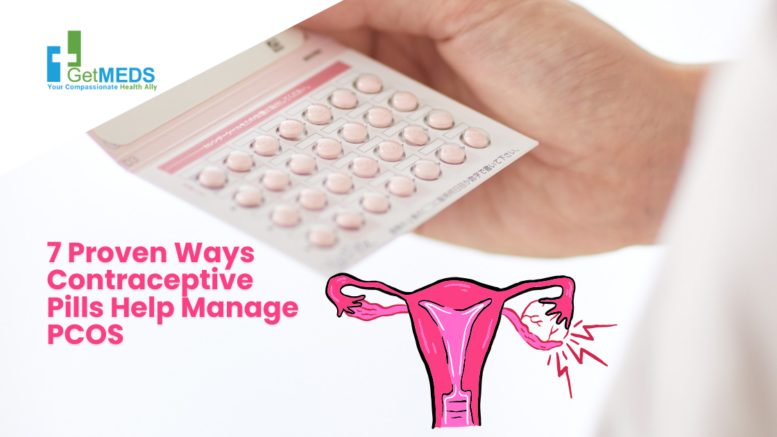
7 Proven Ways Contraceptive Pills Help Manage PCOS April 3, 2025 Article Contraceptive pills for PCOS (polycystic ovary syndrome) management have been commonly recommended by gynaecologists as a first-line treatment, as well as for other hormonal conditions like abnormal menstruation, dysmenorrhea, and premenstrual syndrome. It works in helping women handle the symptoms and the complications that come along with having hormonal imbalance due to how contraceptive pills can inhibit androgen production — something that your ovaries excessively produce when you’re diagnosed with the condition. In the Philippines, birth control pills are made available in pharmacies and medicine distribution companies as long as you have a valid prescription made by your doctor. Even though there are still some misconceptions that come along with using the medication, there is no denying that it offers a lot of benefits for women who deal with severe pain and discomfort during their red days, as well as an effective PCOS treatment for those with the health condition. [toc] What is PCOS Polycystic ovary syndrome (PCOS) is a hormonal issue that involves the imbalance of hormones caused by your ovaries when it produces an excessive amount of androgens. When this happens, you may have irregular menstrual cycles, meaning that there are instances wherein you miss periods or do not have regular ovulations — two reasons why this condition is also the reason behind infertility among women. Common PCOS Signs and Symptoms Of course, as with any health condition, the signs of PCOS may differ per individual. However, in general, these are the symptoms you may encounter if you have polycystic ovary syndrome: Irregular periods: This means not having your periods at a consistent schedule. The normal interval before you get your period is usually 28 days, with your red days supposed to last for four to seven days only. When you have irregular periods, you may have months wherein you do not bleed or bleed for more than seven days. Acne: These are pimples on your skin that are pus-filled and could be painful sometimes. Hyperpigmentation: This is when you get dark patches on the skin, particularly in areas like your neck, underarms, under your breasts, and the area between your legs. Skin tags: These are growths on the skin that are harmless and can be seen along the area of your neck, eyelids, and underarms. Mild hair loss: You may begin losing patches of hair along the head, or in worst cases, may start balding. Cysts: Occurs in the ovaries. This is when the ovaries look bigger or have egg sac cysts when looked over an ultrasound. Obesity: Those with PCOS have a hard time losing weight, hence the tendency to be obese is likely. Infertility: Since you don’t ovulate in a regular period of time when you have this hormonal disorder, you can face difficulties when it comes to trying to conceive. These symptoms and signs of this ovarian syndrome may appear during a girl’s puberty or when she’s in her early to mid-20s. It’s also possible for a girl who has never had her period to have this disorder, which means that PCOS symptoms in unmarried girls do not have any difference with those who already have their periods, are married, or have any prior sexual experience. Health Conditions That May Come with Having PCOS When you’re diagnosed with polycystic ovary syndrome, you are also at risk of developing other health conditions such as: Type 2 diabetes: Due to your body becoming insulin resistant and in turn causing you to have high levels of blood sugar, you may develop type 2 diabetes. Hypertension: Having polycystic ovary syndrome causes blood pressure to spike up, hence you may be more susceptible to having the said condition. High cholesterol: As there’s an imbalance of hormones that influences lipid metabolism — not to mention being insulin resistant — it can increase the level of cholesterol to an unhealthy amount. Heart disease: Because of high blood pressure, weight gain, and insulin resistances, there’s also the likelihood of being at risk of developing cardiovascular diseases. Endometrial cancer: Since polycystic ovary syndrome induces irregular periods, therefore making you miss periods, it can prompt the uterine lining to be thicker which makes a woman more susceptible to having the mentioned disease. Sleep apnea: This is a sleeping disorder that causes you to stop breathing while you’re asleep. It can occur when you have PCOS because of hormonal imbalances and an uneven accumulation of body fat around the neck. Depression: Since higher androgen levels can cause excessive hair growth and weight gain, it can negatively affect a woman’s perception about herself which also affects her self-esteem and confidence, leading to feeling depressed. Anxiety: Due to hormonal imbalances and the physical changes one has because of PCOS, it can result in mood swings and a greater inclination to feeling anxious. Why Contraceptive Pills are Used for PCOS Oral birth control has two types: combined oral contraceptives (COCs) and progestin-only contraceptive pills. Combined birth control pills have both progestin (a synthetic version of the progesterone hormone) and estrogen. Meanwhile, as observed from the name itself, progestin-only pills (or mini-pill) only have progestin in its formulation, which makes it the perfect contraceptive pills for breastfeeding moms and the optimal choice for women who cannot take estrogen because of certain health conditions. Among the two, combined oral contraceptives for PCOS management is the one primarily prescribed by gynecologists. This is because of how estrogen — the hormone also present in the medication — not only regulates menstrual cycles, but also helps lessen other effects brought by the hormonal condition like hirsutism (excessive hair growth) and acne. Nonetheless, progestin-only pills can be used for polycystic ovary syndrome too. However, it won’t do much about managing the physical manifestations of the condition, but will focus more on treating irregular periods so that the risk of having uterine cancer won’t be high — and can offer less side effects than combined oral contraceptives. Some contraceptive pill brands in the Philippines that are commonly
20 Cancer Myths and Misconceptions You Should Stop Believing in 2025
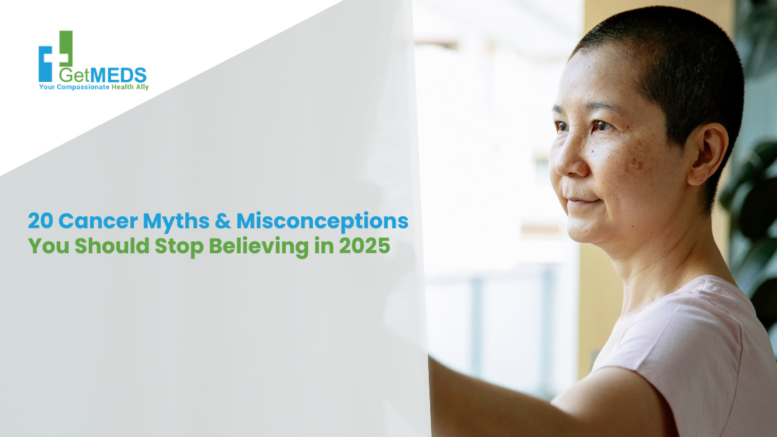
20 Cancer Myths and Misconceptions You Should Stop Believing in 2025 April 7, 2025 Article Cancer myths and misconceptions is a topic discussion that continues to be passed around without much caution or the need to fact check by the people, prompting misleading content to be disseminated more. Hence, it’s important to seek reliable sources when it comes to healthcare information — such as Getmeds Philippines Inc., an online pharmacy — who continue to support cancer patients and the important role of inclusive information-sharing in public health. As cancer in the Philippines persists to be among the top of public health concerns nationwide, it’s understandable why many people want to remain cautious and know what they can do to prevent developing the disease. However, with so much news circulating about what should and what can’t be done in order to take care of your well-being, it can be hard to differentiate facts from fiction, especially with how certain misconceptions of cancer have been around for years and yet keep on causing unnecessary stir within society. It’s significant to be aware of what the truths are regarding this serious illness as much as it’s important to make a conscious effort of having your health be at its best. This allows you to avoid doing preventive measures that are not needed or restrict yourself from doing something that you ought not to worry about. Take colorectal cancer for example, the fourth leading cause of cancer-related deaths in the Philippines, diseases like this and people being concerned about it may have the potential of contributing to widespread misinformation about the matter. But regardless how worrisome and anxiety-provoking it may be, let’s do our part of debunking myths related to it among others prevailing cancer types. https://youtu.be/y5A1RwbrERs[toc] To help you differentiate misconceptions and facts from each other, we’ve gathered popular cancer myths that have been widely believed for a long time that you can also read into for your own guidance. These have been compiled with the aim of enlightening those who still believe them and to provide new findings regarding the topic. These 20 common misconceptions for cancer entail the following: Cancer is contagious Cancer is a fungus Cancer always leads to death Getting a biopsy can cause cancer to spread Cancer cannot be prevented Using cell phones can cause cancer X-rays and CT scans can cause cancer Herbal products can cure cancer Eating sugary food can worsen cancer Artificial sweeteners can cause cancer Eating food and beverages with soy can cause cancer Eating microwaved food in plastic containers and wraps can cause cancer Pesticides can cause cancer Thinking negatively or positively can affect cancer growth Massages can cause cancer Using deodorants or antiperspirants can cause breast cancer Using hair dye can cause cancer Breast cancer can only happen to women Having no family member with cancer means you will never have it too People with cancer are too ill to work and have jobs Now, let’s go ahead and explore each one thoroughly. Myth: Cancer is contagious No, this disease is not contagious. You cannot contract it from someone else and you cannot give it to someone else as well. Some inquiries revolve around wondering if this illness can be transmitted through saliva, sexual intercourse, or any type of close proximity with a patient — all of which are already proven to be false as the only way it can be possibly passed from one person to another is through genetics. Similarly, animals can’t pass it on to humans. They can only pass it within their species through bites or sexual contact. https://youtu.be/y5A1RwbrERs Myth: Cancer is a fungus This is false. This serious illness isn’t a fungus nor can it be caused by a fungus. This myth originated from Dr. Tullio Simoncini, an Italian doctor who said the oncological disease is a fungus and in turn can be treated with sodium bicarbonate intravenously. Considering his theory was unheard of and unique amidst other claims, it garnered attention from the press that led more people hearing about it. Nonetheless, this theory has been proven to be false, alongside other notions he has brought forward about the serious illness. Myth: Cancer always leads to death Despite it being a health condition that can lead to fatal results if not treated early or properly, having this disease doesn’t always lead to death. Though of course, it still depends on what type of malignancy you have and when you started your treatment upon diagnosis. This highlights the importance of undergoing screenings for early detection, since it can play a huge role in ensuring that your condition becomes better in the long run as early detection equals faster recovery. Myth: Getting a biopsy can cause cancer to spread A biopsy is the process of taking tissue samples in a suspicious area and examining it to confirm whether it’s malignant or benign. It’s a diagnostic procedure that can help in confirming a diagnosis and moving forward with one’s medical treatments. Technically speaking, there is a possibility that a biopsy can cause the disease to spread (due to what is called as “tumor/needle tract seeding”) — this is extremely rare, a detail that people should remember, and that recent studies confirm that no patient got a biopsy and ended up with more abnormal cell growth spreading in their body. Myth: Cancer cannot be prevented Yes, it can definitely be prevented. In fact, there’s a lot of things that you can do in order to lower cancer risk. You can change your diet and choose healthier food options, you can start exercising to be within a healthy weight range, and you can get rid of habits that you know are harmful to your health (smoking and using tobacco products, drinking alcohol, etc.). Moreover, you may even opt to have yourself screened for the disease, especially if your family history tells you that you have a higher susceptibility of developing it. All of these can be effective ways of preventing you from contracting the illness or treating it while
Getmeds Salute Cancer Warriors: Free Live Q&A with a Doctor This April – Get Your Questions Answered!
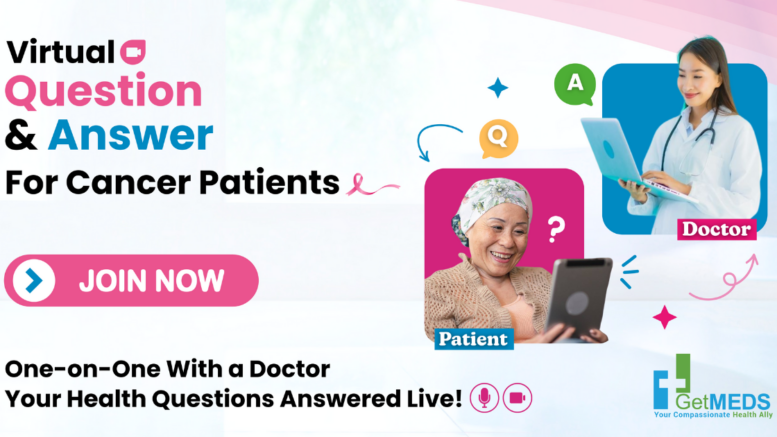
Getmeds Salute Cancer Warriors: Free Live Q&A with a Doctor This April – Get Your Questions Answered! April 14, 2025 Article Las Pinas City, Philippines — With its ongoing support for cancer patients and the importance of making healthcare information accessible to all, Getmeds Philippines Inc. invites you to a free virtual question and answer for cancer patients to be held this April 2025. This upcoming interactive session will give you the chance to ask any questions or concerns you may have about health to our invited oncology expert. From topics that revolve around the treatments you’re undergoing, the medicines that are prescribed to you, and any possible side effects that you wish to manage — you can have them answered at no cost, and even gain extra knowledge as you listen to what other patients want to know as well. Getmeds Philippines Inc. is a trusted online pharmacy in the Philippines offering OTC products and prescription medicine since 2020. Our catalog of oncology, hematology, and anesthesiology products are of competitive pricing, and we can have your orders delivered to your doorstep regardless of where you are nationwide. Program Details: Date: To be announced Time: To be announced Platform: Zoom How to Register: Sign up through our Google Form to reserve your slot and be a part of this informative online seminar: https://forms.gle/Jsc7gLbmnETK9VA37 Stay updated: Visit the official Facebook page of Getmeds where we’ll post any announcements and additional information about this event.
Life-Changing Tips for Managing Chemotherapy Side Effects in 2025: What to Do Before, During, and After Treatment
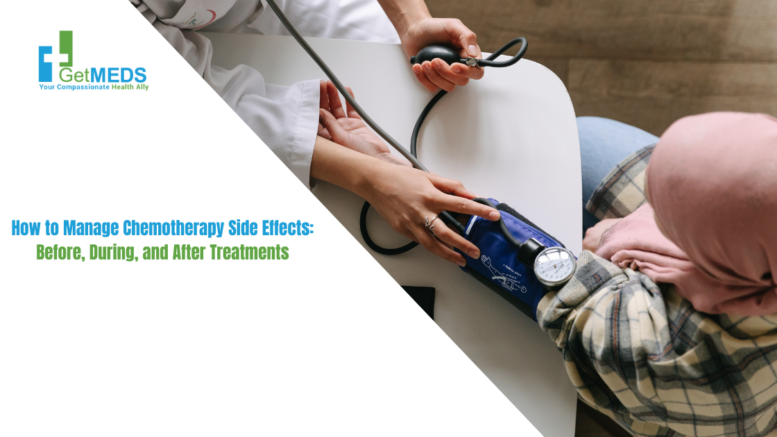
Life-Changing Tips for Managing Chemotherapy Side Effects in 2025: What to Do Before, During, and After Treatment April 14, 2025 Article Chemotherapy side effects may vary from person to person, but there are a couple of common ones that patients often always get to experience as they’re taking their cancer care medicines or undergoing their cancer treatments. Since chemotherapy also happens to be the most common form of cancer therapy, seeking ways to relieve other reactions your body may have upon taking the medication is a sought for topic by individuals receiving said treatments due to how uncomfortable it can be and how some side effects have physical manifestations that are of concern or painful.
How to Get Medical Assistance from DSWD: Your 2025 Ultimate Guide
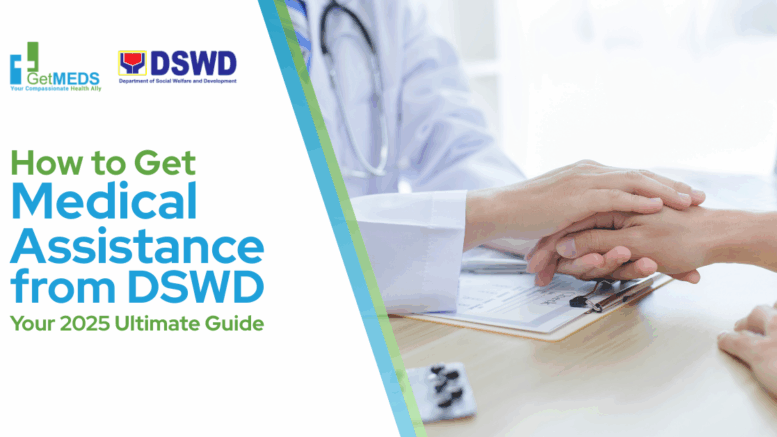
How to Get Medical Assistance from DSWD: Your 2025 Ultimate Guide May 22, 2025 Article Ang Kagawaran ng Kagalingan at Pagpapaunlad Panlipunan o Department of Social Welfare and Development (DSWD) ay isang ahensya ng gobyerno na namamahala sa pagbuo, pagtupad, at pag-coordinate ng mga patakaran ukol sa pagprotekta at paglutas ng kahirapan sa bansa para sa kapakanan ng mga naghihirap at ng mga nasa hindi magandang kalagayan. Kaugnay nito, mayroon silang mga programa kung saan ang mga taong nangangailangan ng ayudang pinansyal ay maaaring lumapit sa DSWD. Ang tulong na maibibigay nito sa kanila ay mahalaga sa pagbuti ng kanilang kalagayan, pati na rin sa pag-iwas sa posibilidad na sila ay makaranas ng krisis sa pananalapi dahil sa laki ng gastusin na pwede nilang malikom. Isa sa mga naitalang programa ay ang Assistance to Individuals in Crisis Situations o AICS. Nabibilang sa programang ito ang DSWD medical assistance for cancer patients sa bansa, dahil maaari nilang bayaran ang iyong mga chemotherapy cycles o cancer medicines. [toc] Ano ang Assistance to Individuals in Crisis Situations (AICS) ng DSWD? Ang DSWD Assistance to Individuals in Crisis Situations (AICS) ay naghahatid ng tulong pinansyal at materyal sa mga nais magkaroon ng access sa mga pangunahing pangangailangan ng tao o kaya naman sa mga healthcare needs ng tao, kasama ang pagkakaroon ng gamot at pag-undergo ng mga importanteng operasyon. Sa ilalim ng tulong pinansyal, ito ang DSWD AICS list ng mga healthcare expenses na kaya ng programang ito tustusin: Bayarin sa ospital Gamot at treatments Mga kagamitang medikal (prosthetics, wheelchair, hearing aids, atbp.) Mga prosesong laboratory at diagnostics Therapy at rehabilitasyon Hemodialysis sa mga mayroong kidney failure Chemotherapy at iba pang cancer treatments Mga medikal na operasyon Mga orthopedic implants at prostheses para sa mga nagkaroon ng severe injuries sa kanilang joints o nangangailangan sumailalim ng joint replacement surgery Komplikasyon pagkatapos ng panganganak Maliban dito, ang AICS ay naghahandog din ng pinansyal na tulong sa libing, transportasyon (sa loob lamang ng Pilipinas), edukasyon, pagkain, at iba pang sitwasyon na pwedeng ituring nasa krisis ng Department of Social Welfare and Development. Sino ang pwedeng kumuha ng AICS? Kahit sino ay pwedeng makapag-apply para kumuha ng AICS DSWD financial assistance. Ayon sa Senate Bill No. 2328, ang sinumang tao o pamilya na kinikilalang nasa state of active crisis o crisis situation ng isang Department of Social Welfare and Development Social Worker ay maaaring magrequest ng na mapasama sa Assistance to Individuals in Crisis Situation (AICS) program. Kasama dito ang mga: Persons with disability (PWD) Senior citizens Solong magulang Magsasaka Mangingisda Ano ang mga requirements para sa AICS application? Ang mga DSWD AICS requirements na kailangan mong ihanda ay nakadepende sa anong klaseng tulong na pinansyal ang gusto mong kunin. Maliban sa AICS DSWD form na ginagamit sa pag-aapply na mainam mong kumpletuhin at siguraduhin na tama, ang mga sumusunod ay ang mga ibang dokumento na kailangan mong i-hain para sa programang ito: Para sa mga bayarin sa ospital o hospital bill: Valid identification card o anumang alternatibong dokumento para sa pagkakakilanlan kung wala kang ID (ang mga batang hindi nakatalang mag-aaral sa eskwelahan, indigenous people, mga biktima ng sunog, bagyo o iba pang kalamidad o sakuna ay maaaring exempted dito) Medical certificate / Clinical abstract / Certificate of Confinement (kinakailangang naibigay ito sa loob ng tatlong (3) buwan) Hospital bill o Statement of Account (kung may natitirang balance pa sa ospital) Promissory note (kung may natitirang balance pa sa ospital) Social Case Study Report Para sa DSWD medical assistance cancer requirements (chemotherapy treatments at cancer medicines): Valid identification card o anumang alternatibong dokumento para sa pagkakakilanlan kung wala kang ID (ang mga batang hindi nakatalang mag-aaral sa eskwelahan, indigenous people, mga biktima ng sunog, bagyo o iba pang kalamidad o sakuna ay maaaring exempted dito) Medical certificate / Clinical abstract (kinakailangang naibigay ito sa loob ng tatlong (3) buwan) Reseta ng cancer medicine (kinakailangang naibigay ito sa loob ng tatlong (3) buwan) Treatment Protocol Official Price Quotation Social Case Study Report Source: DSWD Bakit kailangan magpasa or mag-submit ng price qoutation? Ang quotation letter ay isang official document na kailangang kunin ng pasyente o ng kanyang representative mula sa mga DSWD-accredited pharmacy o supplier tulad ng Getmeds Philippines. Ang Getmeds ay nagbibigay ng price quotation at tumatanggap ng Guarantee Letter para sa mga cancer patients na nangangailangan ng medical assistance para sa mga gamot sa cancer, kabilang na ang chemotherapy treatment. Nakasaad dito ang kompletong detalye ng gamot para sa cancer, kabilang ang brand name, generic name, dosage, presyo bawat piraso, kabuuang halaga, at validity ng quotation. Mag-message lang sa Facebook page ng Getmeds upang makahingi ng qoutation letter. Mas mabuting nakahanda ang mga nabanggit na requirements sa taas dahil ito ay ive-verify rin ng naturang pharmacy. Ang pagkukumpleto ng mga nasabing requirements bago pa man ang pagkuha ng qoutation letter ay mahalaga upang mapabilis ang proseso ng application. Mahalaga na ang quotation letter ay magmula lamang sa mga accredited pharmacy o supplier ng DSWD upang masigurado ang pagiging lehitimo nito at ang pagsunod sa mga alituntunin ng DWSD. Para sa therapy at iba pang mga treatments at gamot: Valid identification card o anumang alternatibong dokumento para sa pagkakakilanlan kung wala kang ID (ang mga batang hindi nakatalang mag-aaral sa eskwelahan, indigenous people, mga biktima ng sunog, bagyo o iba pang kalamidad o sakuna ay maaaring exempted dito) Medical certificate / Clinical abstract (kinakailangang naibigay ito sa loob ng tatlong (3) buwan) Reseta ng gamot (kinakailangang naibigay ito sa loob ng tatlong (3) buwan) Laboratory’s request / Doctor’s Order (kinakailangang naibigay ito sa loob ng tatlong (3) buwan) Certification ng Psychiatrist / Psychologist Official Price Quotation Para sa hemodialysis treatment: Valid identification card o anumang alternatibong dokumento para sa pagkakakilanlan kung wala kang ID (ang mga batang hindi nakatalang mag-aaral sa eskwelahan, indigenous people, mga biktima ng sunog, bagyo o iba pang kalamidad o sakuna ay maaaring exempted dito) Medical certificate / Clinical abstract / Certificate of Confinement (kinakailangang naibigay ito sa loob ng tatlong (3) buwan) Reseta ng mga gamot
First Affordable Teriparatide Injection Biosimilar Will Enter the Philippine Market
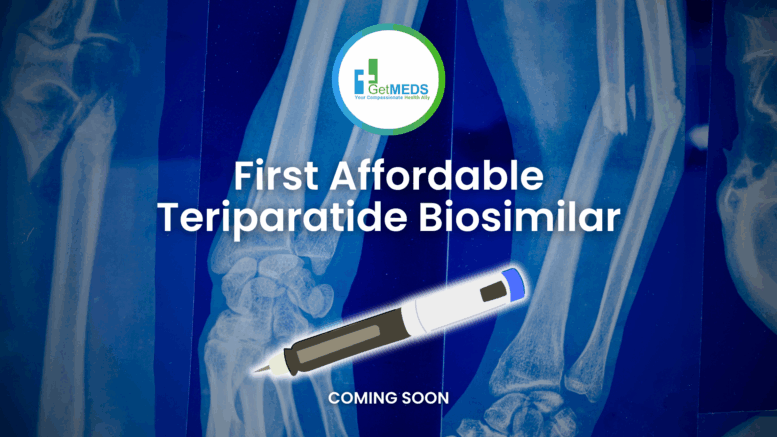
First Affordable Teriparatide Injection Biosimilar Will Enter the Philippine Market — A Future of Cost-effective Bone Health Treatment June 9, 2025 Article Getmeds, a trusted provider of affordable cancer, hematology, and anesthesia products, is taking a meaningful step forward by offering the most cost-effective teriparatide injection pen biosimilar in the Philippine market. This initiative provides an accessible treatment option for patients affected by osteoporosis and other serious bone-related conditions. The innovative injection pen have been carefully designed for the convenience and ease of use of patients with osteoporosis. Key features include: Side injection button for effortless dosing Integrated dose counter for precise tracking No priming required — ready to use immediately Pre-filled pen — no need to replace drug cartridges (pen is single-use and not reusable) 360-degree transparent view of the drug solution Stable at room temperature — no refrigeration needed Product Information Teriparatide is a synthetic form of parathyroid hormone that stimulates new bone growth. It is widely recommended for postmenopausal women, men with primary osteoporosis, and individuals with glucocorticoid-induced osteoporosis who are at high risk of fractures. The product is a 20 μg/80 μL solution for injection, presented in a pre-filled pen. Each daily dose delivers 20 μg of teriparatide in 80 μL, administered subcutaneously in the thigh or abdomen. Each teriparatide pen dosage contains 2.4 mL of solution, equivalent to 600 μg of teriparatide (250 μg/mL), and is packaged one pen per box. This affordable biosimilar offers comparable safety, efficacy, and quality to the original drug—delivered at a significantly lower cost to ensure wider access to this life-changing therapy. Please note that teriparatide biosimilar is a prescription medicine and should only be used under the supervision and guidance of a licensed healthcare professional. “After successfully introducing the most affordable sugammadex anesthesia in the Philippines, we are now bringing the same unwavering commitment to accessibility and quality healthcare with the country’s first affordable teriparatide biosimilar,” said Director Naresh Bishnoi of Getmeds. “This milestone marks another step forward in providing Filipino patients and healthcare providers with innovative, cost-effective treatment options that improve outcomes and enhance lives.” Getmeds, as the provider of this first affordable teriparatide biosimilar, is committed to working closely with healthcare providers, doctors, hospitals, and pharmacies to ensure nationwide availability. By offering teriparatide injection at a price point that prioritizes patient access and equity, Getmeds aims to support better treatment adherence and improved patient outcomes across the healthcare system. Disclaimer This blog is intended for licensed healthcare professionals in the Philippines only.The information provided is for educational and informational purposes regarding an upcoming prescription product. This is not a substitute for professional medical advice. By clicking the inquiry button, you confirm that you are a licensed HCP authorized to request product information Product Information
9 Affordable and Healthy Filipino Foods That Help Reduce Cancer Risk Budget Friendly Alternatives

9 Affordable and Healthy Filipino Foods That Help Reduce Cancer Risk (Budget-Friendly Alternatives!) April 23, 2025 Article More than being physically fit and keeping your body in shape, ensuring that you’re eating healthy with cancer-fighting food as you’re undergoing chemotherapy and taking other prescribed cancer medicines is beneficial for the entirety of your well-being. Considering that consuming a nutritious diet significantly lowers cancer risk, it plays a vital role in cancer prevention and management.counteract them However, contrary to popular belief, having a healthy diet doesn’t necessarily mean you’ll have to spend lots of money buying expensive food and ingredients. For Filipinos, if you’re asking yourself how to eat healthy in the Philippines with little money, then you’ll be pleased to know that there are tons of affordable local alternatives that you can opt for if you’re interested in making more nourishing food choices for yourself — with one of them being visiting local markets or palengkes to look for budget-friendly food components perfect for your healthy recipes suited for patients. [toc] Why Food Choices Matter in Cancer Prevention Choosing to eat food that has great nutritional value and avoiding those that are bad for your health can contribute to reduced risk of cancer. It’s significant to know that there are foods that contain essential nutrients such as antioxidants, fiber, and natural anti-inflammatory agents which are recognized to help in boosting your body’s defense against diseases that can compromise your physical condition. Carcinogenic foods, also known as foods that have substances which can increase one’s risk of developing malignant tumors, is often part of the typical Filipino diet even when we’re not aware of it. These types of foods are commonly processed meats, instant noodles, and red meat among others. As is often the case, people do not make the effort of making their food nutritious because of how some are convinced that it’s a high maintenance task to do. They think that buying the ingredients alone wouldn’t be cost-effective, and that the components that make a healthy meal would mean spending a significant amount of money that wouldn’t be practical if you’re already spending on anticancer drugs. Nonetheless, there are plenty of more affordable options that you can rely on to still ensure that you’re nourishing yourself properly with the food that you eat and even the beverages you consume. As mentioned, you can make a trip to the palengke and opt to buy your cooking ingredients there for a cheap alternative to expensive healthy foods in the Philippines. Moreover, you can look through the kind of food that are sold for a cheaper price but are still nutritious and can help in lowering cancer risk. There definitely isn’t a rule that in order to stay healthy and eat healthy, your meals should be made of expensive and high-end food items. 9 Budget-Friendly Filipino Foods That Lower Cancer Risk We’ve compiled a list of affordable anti-cancer foods in the Philippines to get you started if you’re interested in finding cheaper components for your nourishing meals and might be wondering what Filipino foods can prevent cancer on a budget, especially if you’re in the midst of undergoing treatments. Here are 9 cheap and local foods proven to lower cancer risk: Kamote (Sweet Potato) Malunggay (Moringa) Banana (Saba & Lakatan) Pechay (Bok Choy) Monggo (Mung Beans) Dilis (Anchovies) Ginger (Luya) & Turmeric (Luyang Dilaw) Pineapple (Pinya) Saluyot (Jute Leaves) Kamote (Sweet Potato) Sweet potatoes, or kamote, and its extracts are known to have high levels of polyphenols and anthocyanins, bioactive compounds that can bring on the occurrence of cell cycle arrest which in turn can lead to cell death — hence why this root vegetable is considered to be among the foods that prevent cancer. Particularly, purple sweet potato leaves have the most prominent effects in regards to breast cancer, while Carolina Ruby leaf and stem extracts work strongly against lung cancer. Other than the two aforementioned cancer types, it’s also said to stop the development of this disease in the stomach, colon, and bladder. And regardless if it’s an orange or purple sweet potato, it’s said that its peel extracts may have tumor-inhibiting effects (although it’s worth noting that this data is taken from test tube studies, and it’s not confirmed yet whether it has the same effects on humans). Malunggay (Moringa) Malunggay leaf extracts have cancer-fighting food properties that are claimed to fight against types of the malignant disease like breast cancer and colorectal cancer — and even other types, due to how it’s said to have the ability to stop uncontrolled cell replication. Alongside bark extracts, it has the potential to treat medical conditions other than the said oncological disease, which makes it an overall nutritious plant that has tons of benefits concerning our overall health and considered to be one of the best cancer-fighting vegetables in the Philippines. Banana (Saba & Lakatan) Bananas contain several pharmaceutical activities, with one of them being antineoplastic characteristics among others. It has the competence to kill off parasites in the body, lower blood sugar and cholesterol levels, regulate the immune system, protect cells from damage, fight harmful bacteria, and prevent ulcers in the stomach. Moreover, because of how bananas are rich in fiber, it can help with preventing colorectal cancer. It’s also regarded to be one of the foods that prevent cancer along the upper gastrointestinal tract and other areas, thanks to resistant starch, a component that offers a lot of positive health outcomes and which is studied to be able to lessen the chances of developing cancer by more than 60%. According to research, resistant starch can also be taken as a power supplement, which a dose used in the mentioned study is said to be already equivalent to eating a banana daily. As long as the banana is not too ripe, then it can help with growing healthy bacteria in the bowel. Read more about the other advantages of eating bananas with this blog that explains the health benefits of adding this fruit to your daily diet. Pechay (Bok Choy) Included in the ways
